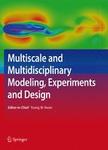版权所有:内蒙古大学图书馆 技术提供:维普资讯• 智图
内蒙古自治区呼和浩特市赛罕区大学西街235号 邮编: 010021

作者机构:Zhejiang Guangsha Vocat & Tech Univ Construct Sch Civil Engn Architecture Dongyang 322100 Peoples R China
出 版 物:《MULTISCALE AND MULTIDISCIPLINARY MODELING EXPERIMENTS AND DESIGN》 (Multiscale Multidiscip. Model., Exp. Des.)
年 卷 期:2023年第6卷第2期
页 面:263-276页
核心收录:
主 题:High-performance concrete Compressive Strength Improved Grey Wolf algorithm Dragonfly optimization algorithm Adaptive network fuzzy inference system
摘 要:In today s world, high-performance concrete (HPC) has solved many construction problems. HPC is an advanced concrete used to construct dams, silos, skyscrapers, etc. The most important difference between this concrete and ordinary concrete is its compressive strength (CS). The compressive strength of HPC is a result of the additives used in its construction. Fly ash and blast furnace slag are admixtures that increase the compressive strength of concrete. Adding these materials can reduce the amount of cement, bringing economic efficiency. Furthermore, compressive strength can be obtained in the laboratory and by software. The laboratory model is not economical and does not save time, so the software model is replaced. The use of artificial intelligence and adaptive network fuzzy inference system (ANFIS) modeling can be a suitable solution for estimating the compressive strength of high-performance concrete. To get satisfactory results, the model can be combined with optimizers. Improved Gray Wolf Algorithm (I_GWO) and Dragonfly optimization algorithm (DA) are innovative algorithms that estimate estimated compressive strength for lab results. In modeling, certain evaluators determine the superiority of the combined model. This article notes that the ANFISDA hybrid model performs better than ANFISI_GWO.